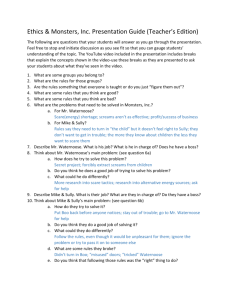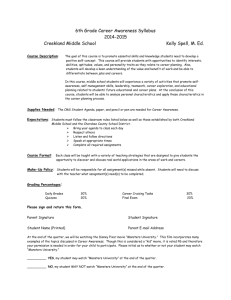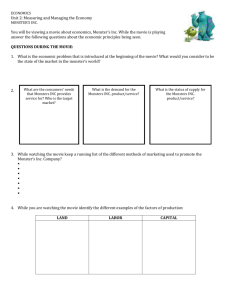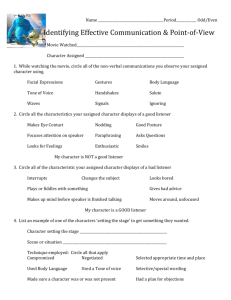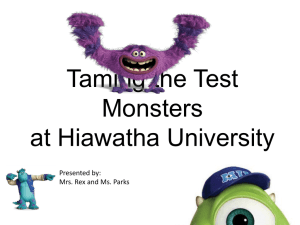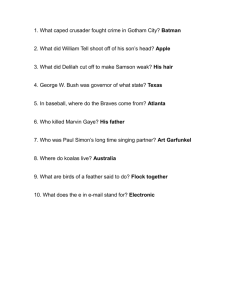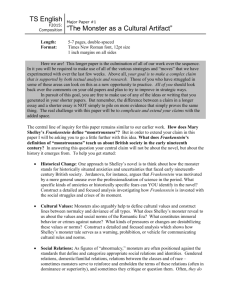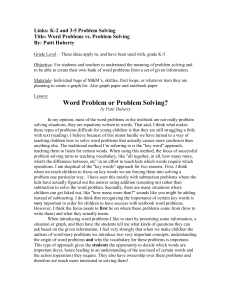File - Riley milligan
advertisement
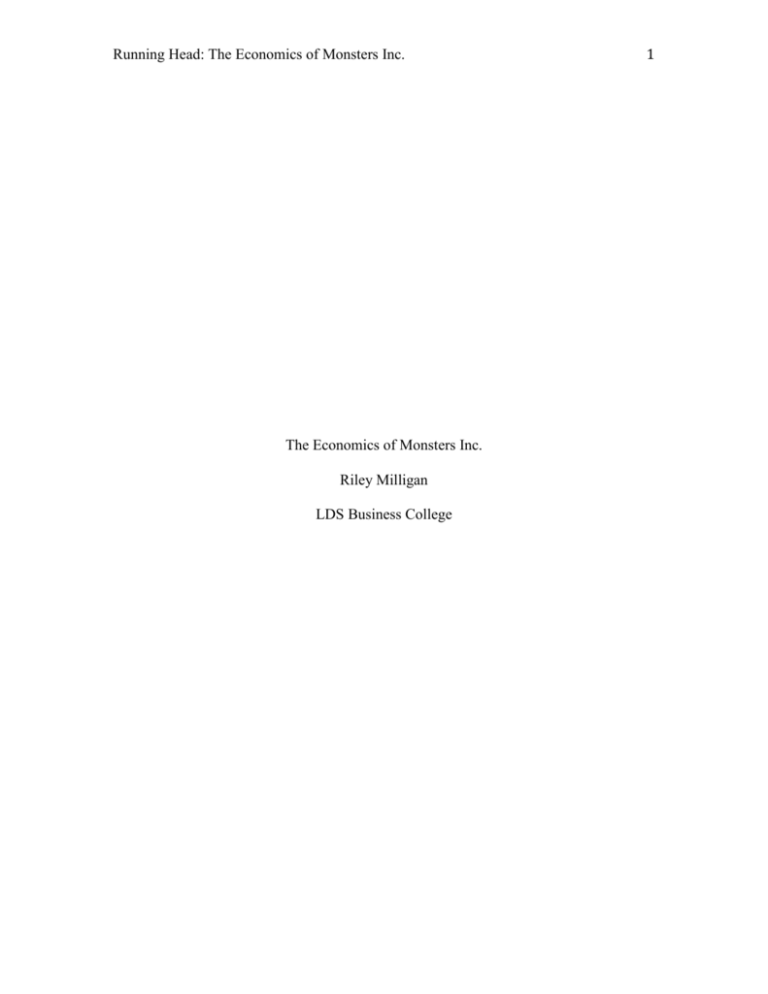
Running Head: The Economics of Monsters Inc. The Economics of Monsters Inc. Riley Milligan LDS Business College 1 The Economics of Monsters Inc. 2 The Economics of Monsters Inc. In the movie Monsters Inc. there is a corporation that provides energy for the citizens of the Monstropolis. Problems arise when there is an energy shortage and a supposedly toxic child is released into the monster world. There are many aspects of microeconomics that can apply to this movie. I am going to focus on just a few categories: supply and demand, factors of production, specifically labor and capital, and government regulations. As I mentioned there is a market shortage of “scream energy” in Monstropolis. In the beginning of the movie Mike and Sully, the two main characters are headed to work. Mike wants to drive his car but Sully stops him and says they are walking because of the scream shortage. The morning newspaper’s headline reads “Rolling Blackouts Expected.” There are no substitute products for scream energy either. This adds to the shortage. The scarcity of scream does not cause a shift in demand. In our society as well as theirs energy is a public good that everyone needs. When we need to drive our cars, light our houses, wash our laundry, etc. we use energy no matter the cost. Those are widely considered necessities. That makes them inelastic. The same goes for the monster citizens. Consumers need the product regardless of the price. When there are no substitutes for the product it adds to the inelasticity. Consumers can’t get it anywhere else so they are willing to pay the price. In order to produce scream energy there is a specific production process. First the Scarers have to prepare. They come out onto the “scare floor” in the factory. Their assistants help them become “scary”. This varies but some monsters change colors, others The Economics of Monsters Inc. 3 put in sharp teeth, and some practice their snarl. Next a door is delivered to each Scarers station. They do a lit shoulder roll a neck pop and then they are off into each door leading to a child’s room. Once in the child’s room they use their various tactics to scare the kids. Those screams are stored in a container to be converted into energy. The first factor of production is Labor. Labor is an important part in the production of scream energy. These Scarers human capital or “monster capital” include the skill to be scary. This is what makes them more efficient. Their value increases if they can scare kids more they can get more screams from them and produce more energy. Mr. Waternoose the companies CEO asks Sully to come give a scare demonstration to train new scare recruits. The demand for skill laborers is increasing but there is a shortage in the supply of labor. The problem is not the lack of monsters, but the lack of skilled monsters. In our world we are human capital. The more skilled a worker you are the higher paying job you get. That is why I along with my peers am going to school right now. We are being trained in more skills to be more valuable human capital. When we enter the workforce we will yield a higher output. The production function is when you take the labor input and capital input to get your output. When you add more of each input you get more output. The trick is to find the most efficient inputs to get output. You have to consider economic costs not just accounting costs. In the case of Monsters Inc. the labor input would be the Scarers, the capital input is children’s screams, and the output is scream energy. They are using more Scarers and more kids and not getting as much scream energy. Children are becoming The Economics of Monsters Inc. 4 harder to scare so the marginal cost is increasing. This way of production is less and less efficient. They have a quota to fill everyday and they have not met it for a long time. I think this scenario is unusual because I would consider the capital to be an externality as well. The kids are the capital but they are a third party in a way. It’s the kid’s screams that are technically what they are using. The kids have to be frightened and pretty messed up by all these experiences. The movie shows this happening with the little girl that escaped from her door. Every time she sees a closet or “her monster” she gets really scared. She wouldn’t go to bed until Sully proved that there was not a monster in her closet. These are the social costs that are not being taken into consideration until Sully gets dragged into this mess. He realizes that the kids are not just scream producers but they are kids. The bad guy of the story Randall comes up with a new plan to generate scream energy more efficiently. He has his partner invent a machine that extracts scream directly from kids whether they are screaming or not. His plan was to kidnap the kids and suck the scream from them. This is a more efficient way for sure but you have to take a step back to consider the social costs. It is not just and efficiency decision but how its hurting others. The story concludes with Sully finding a substitute or alternative energy source. This energy comes from children’s laughs. It is a little unrealistic because it is the perfect solution. It has a higher yield of energy and it is repercussions. It is a perfect win win solution for all parties with no sacrifice. That is great if that existed. This laugh energy made scream energy, once the normal good, an inferior good. The Economics of Monsters Inc. There is an agency called the CDA. They are a government regulation agency. They make sure that “toxic” children don’t get into the monster world. There was an incident where a sock was stuck to a Scarer that had just come from a door. The CDA swooped in to remove the toxic sock from the monster. This organization regulated the safety of what the company was doing, just as the EPA and other organizations do for companies in our government. There are lots of ways that this movie relates to economics. The government agencies, supply and demand, and factors of production all have a place in the monster world but in our world too. 5
